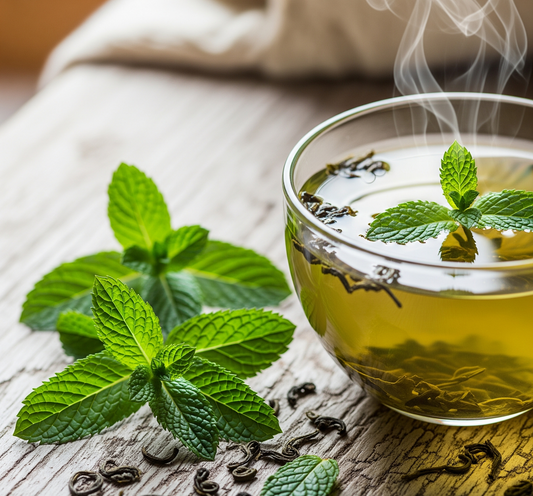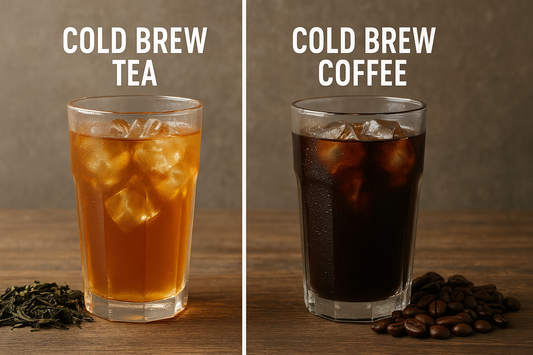Oolong tea is a fascinating beverage that sits between the realms of green tea and black tea, offering a unique flavor profile and a wide range of health benefits.
Oolong tea is a fascinating beverage that sits between the realms of green tea and black tea, offering a unique flavor profile and a wide range of health benefits. In this comprehensive guide, we will delve into the secrets of oolong tea, exploring its flavor characteristics, the potential benefits it provides, and the art of brewing this exquisite tea.
1. How Oolong Tea is Made?
Oolong tea undergoes a meticulous production process. First, the leaves are plucked from the Camellia sinensis plant, the same plant used for other types of tea. After plucking, the leaves are withered under the sun to remove excess moisture. Next, the leaves are oxidized or fermented to varying degrees, typically between 10% and 70%, depending on the desired outcome. Finally, the leaves are fired or roasted to halt oxidation and preserve their unique flavor.
2. Oolong Tea for Weight Loss
Oolong tea has gained popularity as a potential aid in weight loss. It contains polyphenols that may help boost metabolism and fat oxidation in the body. Additionally, oolong tea is often consumed instead of sugary beverages, reducing overall calorie intake. However, it's important to note that weight loss results may vary, and oolong tea should be consumed as part of a balanced diet and a healthy lifestyle.
3. Flavor Profile of Oolong Tea
The flavor of oolong tea can vary depending on the oxidation level. Lightly oxidized oolongs offer a fresh, floral taste with subtle fruity undertones. As the oxidation level increases, oolongs develop richer flavors with notes of honey, roasted nuts, caramel, and sometimes a hint of ripe fruits. Oolong tea strikes a delicate balance between the grassy freshness of green tea and the robustness of black tea.
4. Benefits of Oolong Tea
Oolong tea offers several potential health benefits:
- Antioxidants: Oolong tea contains polyphenols, which are powerful antioxidants that help protect the body against free radicals and oxidative stress.
- Weight Management: Some studies suggest that oolong tea may help increase metabolism and aid in weight loss efforts.
- Heart Health: Regular consumption of oolong tea has been associated with a reduced risk of heart disease and lower cholesterol levels.
- Digestive Health: Oolong tea has been traditionally used to improve digestion and alleviate digestive issues.
- Mental Alertness: The moderate caffeine content in oolong tea can provide a gentle energy boost and promote mental alertness.
Frequently Asked Question (FAQs):
Q1. How much oolong tea should be used per cup?
As a general guideline, use approximately 1 teaspoon (2 grams) of loose oolong tea leaves per 8-ounce cup of water. Adjust the amount based on personal preference and desired strength.
Q2. How much oolong tea should be consumed per day?
It is recommended to consume 2-3 cups (16-24 ounces) of oolong tea per day to enjoy its potential benefits. However, individual tolerance to caffeine and personal health considerations should be taken into account.
Q3. How does oolong tea help with weight loss?
Oolong tea may aid weight loss through its potential effects on metabolism and fat oxidation. The polyphenols and caffeine in oolong tea can help increase energy expenditure and promote fat burning. However, it is not a magical solution, and maintaining a healthy diet and regular exercise are key factors in weight management.
Q4. How is oolong tea processed?
Oolong tea undergoes a process that involves withering the leaves, oxidizing them to various degrees, and then firing or roasting them to halt oxidation. The precise methods can vary based on the specific oolong tea variety and the expertise of the tea producer.
Q5. How much oolong tea is too much?
While oolong tea is generally safe for consumption, it does contain caffeine. Excessive consumption of caffeine can lead to side effects such as increased heart rate, anxiety, or disrupted sleep. It is advisable to monitor your caffeine intake and listen to your body's response.
Brewing Oolong Tea: To brew oolong tea, follow these steps:
- Boil water and let it cool for a few minutes to around 160°F (71°C).
- Add approximately 1 teaspoon (2 grams) of loose oolong tea leaves to a tea infuser or teapot.
- Pour the hot water over the tea leaves and let it steep for 2-3 minutes for lightly oxidized oolongs and 4-5 minutes for darker oolongs.
- Adjust the steeping time according to personal preference for stronger or milder flavor.
- Once the desired flavor is achieved, strain the tea leaves and pour the brewed oolong tea into a cup to enjoy.
Final Words:
Oolong tea, with its unique flavor profile and potential health benefits, offers a delightful and satisfying tea-drinking experience. From the intricate process of its production to the art of brewing, understanding the secrets of oolong tea can enhance your appreciation for this remarkable beverage.
Whether you're seeking a refreshing cup or exploring its potential weight loss benefits, oolong tea is a wonderful choice that combines tradition, taste, and wellness.




